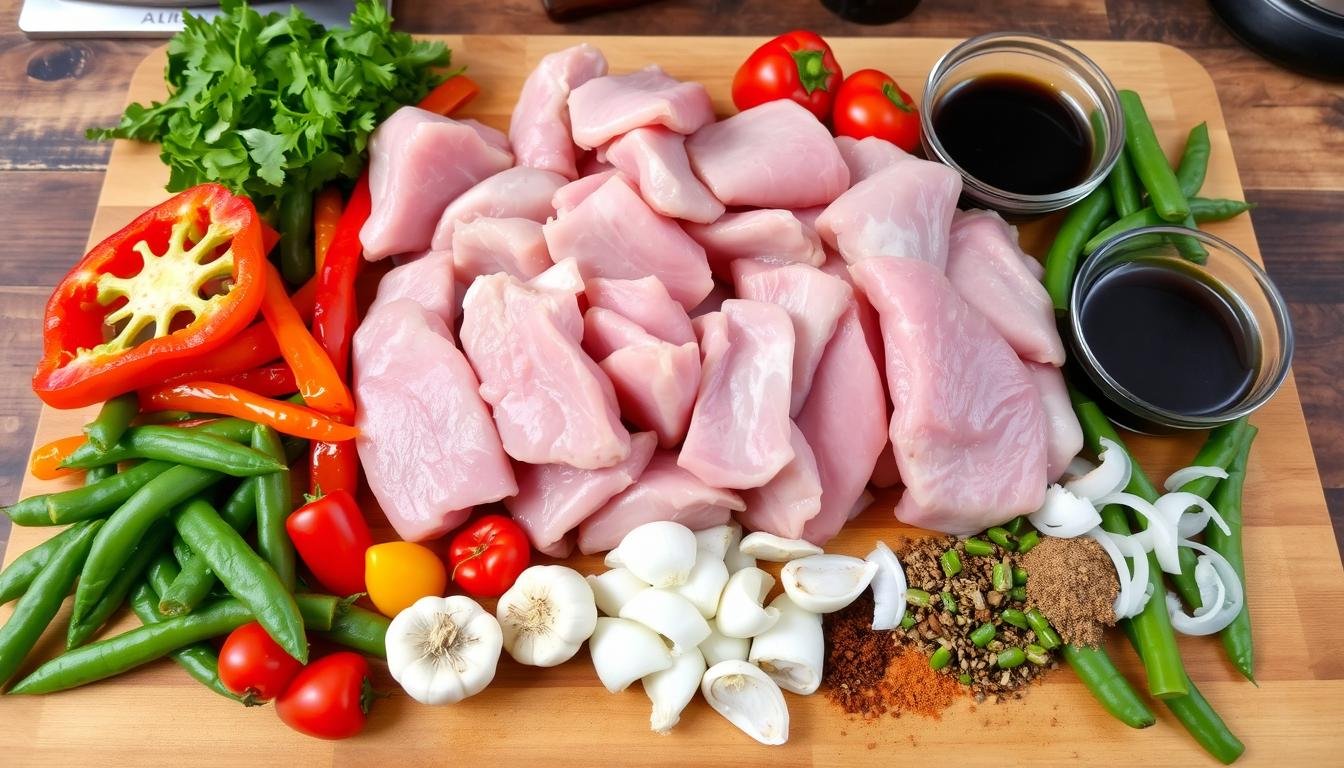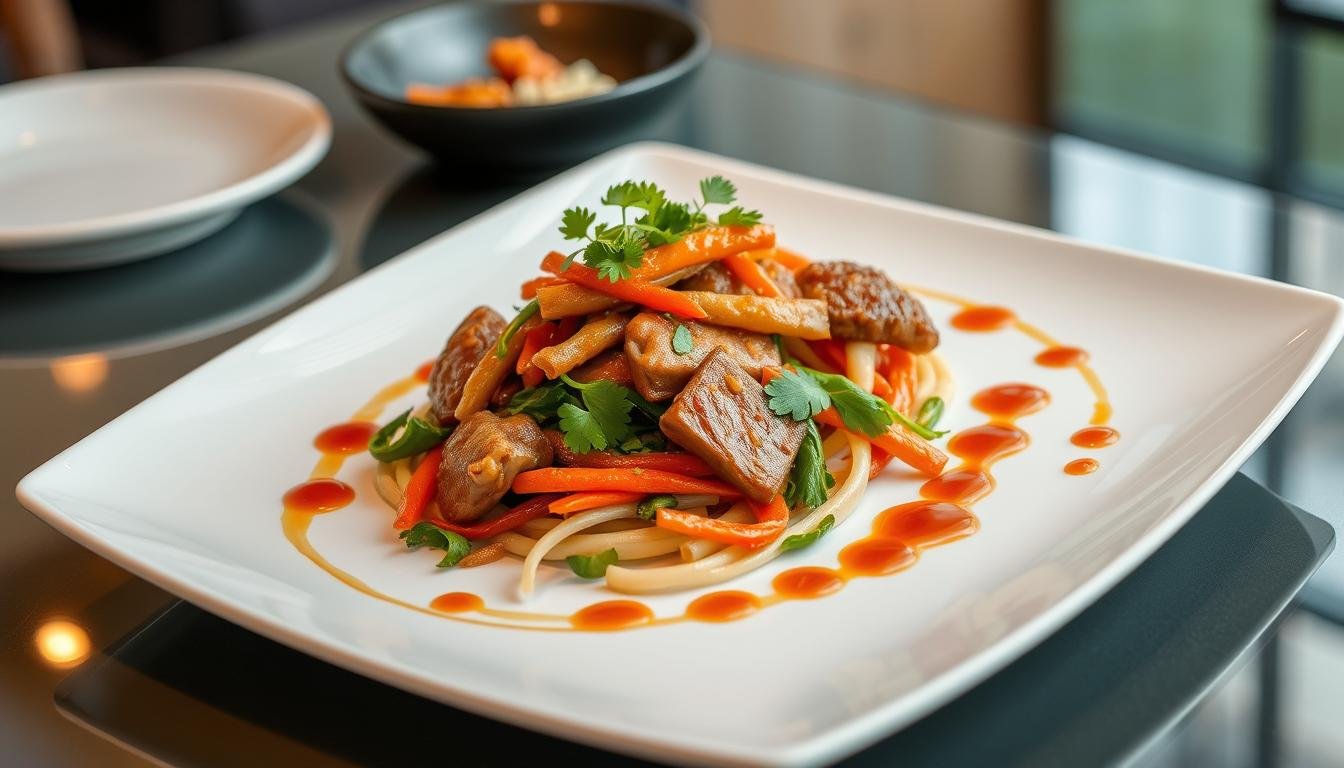Ever wondered why Pigar-Pigar, Pangasinan’s famous stir-fry, is so loved? Let’s dive into its story. We’ll explore the flavors, traditions, and cultural importance that make it a favorite in Pangasinan.
Key Takeaways
- Pigar-Pigar is a signature stir-fry dish from Pangasinan, a province in the Philippines known for its rich culinary heritage.
- The dish reflects the diverse flavors and cooking techniques that have evolved over time in this region, showcasing Pangasinan’s vibrant food culture.
- Pigar-Pigar’s cultural significance in Pangasinan is a testament to the province’s ability to preserve and showcase the unique flavors that define the local cuisine.
- The dish has captivated the hearts and palates of Filipino food enthusiasts, making it a must-try for anyone exploring the diverse flavors of Philippine cuisine.
- This guide will provide you with a comprehensive understanding of Pigar-Pigar, from its definition and origin to its variations, preparation, and place in contemporary Filipino cuisine.
What is Pigar-Pigar?
Pigar-Pigar is a favorite stir-fry dish from Pangasinan, Philippines. It’s a key part of the region’s food scene. It shows the rich heritage and varied tastes of Pangasinan cuisine.
Definition and Origin of the Term “Pigar-Pigar”
The name “Pigar-Pigar” comes from “pigar,” meaning to slice or chop in Pangasinan. This name fits the dish’s preparation. Ingredients are thinly sliced and stir-fried to perfection.
A Historical Perspective on the Dish
Pigar-Pigar has a rich history in Pangasinan. It started with traditional cooking methods and flavors. Over time, it has changed to meet new tastes while keeping its core.
The Cultural Significance of Pigar-Pigar in Pangasinan
Pigar-Pigar is deeply rooted in Pangasinan’s culture. It shows the province’s culinary heritage and its ability to evolve. The dish highlights the local ingredients and techniques, making it a symbol of Pangasinan’s identity.
A small festival in Pangasinan celebrates Pigar-Pigar. It honors its culinary importance and boosts the local economy. The dish draws tourists, showing its cultural significance and economic impact.
Ingredients and Preparation
Pigar-Pigar is a tasty stir-fry dish made with fresh ingredients. The secret to its unique flavor is using top-notch pigar-pigar ingredients.
A Detailed List of Essential Ingredients for Pigar-Pigar
- Sirloin beef or carabeef, thinly sliced
- White onions, sliced
- Cabbage, chopped
- Soy sauce
- Oyster sauce
- Liquid seasoning
- Ground black pepper
- Cooking oil for deep-frying
Tips for Selecting the Freshest and Highest-Quality Ingredients
Choosing the freshest and highest-quality ingredients is key for pigar-pigar. Carabao meat is a favorite in Dagupan city, but beef works too. Look for sirloin beef or carabeef that’s vibrant and free of blemishes.
Pair the meat with fresh veggies like onions, cabbage, and bell peppers. This mix of flavors and textures is perfect.
“The term ‘Pigar-Pigar’ comes from the method of cooking, which involves constantly turning over the meat while deep-frying quickly.”
The pigar-pigar preparation starts with slicing the beef or carabeef thinly. Then, sauté the aromatics and mix the flavors just right. This way, you can make this beloved Pangasinan dish at home.

Variations and Regional Differences
Pigar-Pigar is a famous dish from Pangasinan. But, different parts of the province have their own twist. Some use pork or carabeef instead of beef. They also add unique local ingredients and change how they cook it.
Diverse Interpretations Across Pangasinan
These changes show how diverse Pangasinan’s food scene is. Every town has its own way of making Pigar-Pigar. This highlights the province’s rich food culture.
| Region | Unique Ingredients | Preparation Methods |
|---|---|---|
| Alaminos | Carabeef or cow meat | Fried meat and liver mixed with cabbage and onions |
| Villasis | Bagoong Isda (fermented fish paste) | Sautéed with vegetables and seasoned with fish paste |
| Dagupan | Dagupan Bangus (milkfish) | Incorporation of the distinct-tasting Dagupan Bangus |
| Calasiao | Pakasiat (sweetened raw sugar candy) | Use of Pakasiat as a sweetener |
These changes show the creativity of Pangasinan’s cooks. They use local ingredients and cooking methods. Each version of Pigar-Pigar shows the unique tastes and traditions of its place.
Pigar-Pigar and Other Filipino Stir-Fries
The pigar-pigar dish from Pangasinan is a unique and celebrated stir-fry in Philippine cuisine. It shares similarities with other popular Filipino stir-fries like adobo, sisig, and sinigang. These dishes highlight the diverse flavors and cooking techniques of Filipino cuisine. But, pigar-pigar is special with its savory, tangy, and slightly spicy flavors. It also has unique preparation methods, like thinly slicing the meat and sautéing the ingredients.
Comparing Pigar-Pigar with Other Filipino Stir-Fry Dishes
Let’s take a closer look at how pigar-pigar compares to other beloved Filipino stir-fry dishes:
- Adobo: Adobo is a classic Philippine stir-fry with meat (usually chicken or pork) cooked in a savory vinegar sauce. It differs from pigar-pigar in its vinegar flavor, which is more pronounced in adobo. Pigar-pigar has a tangy, slightly spicy taste.
- Sisig: Sisig is a sizzling Filipino stir-fry made with chopped pork, chicken liver, and chili peppers. Like pigar-pigar, sisig offers a mix of textures and flavors. But sisig is crunchier and spicier due to the chili peppers.
- Sinigang: Sinigang is a Filipino stir-fry soup with a sour broth, often made with tamarind. It shares sour and savory elements with pigar-pigar. But sinigang is a soup, while pigar-pigar is a dry stir-fry.
Knowing the differences and similarities between pigar-pigar and other Filipino stir-fry dishes helps us appreciate the country’s rich culinary heritage.
“Pigar-pigar stands out with its unique blend of savory, tangy, and slightly spicy flavors, as well as its specific preparation methods that involve slicing the meat and sautéing the ingredients.”
Pigar-Pigar in Contemporary Cuisine
Pigar-Pigar has become a hit in modern Filipino food. Restaurants in the Philippines and globally love it. They show how Pigar-Pigar fits into today’s food trends.
The Popularity of Pigar-Pigar in Modern Filipino Restaurants
Pangasinan is famous for its food, and Pigar-Pigar is a big part of it. Places like J&B Pigar Pigar mix old ways with new looks. They make pigar-pigar exciting for more people.
Innovative Twists and Fusion Interpretations of the Dish
Chefs are making pigar-pigar even more special. They mix it with flavors and methods from around the world. These innovative pigar-pigar dishes are a hit with food lovers.

These new takes on pigar-pigar show how it’s changing. It’s a peek into the creativity of Philippine food. It’s winning hearts and taste buds everywhere.
Serving and Enjoying Pigar-Pigar
Pigar-pigar is a favorite dish from Pangasinan. It’s often served with many tasty sides. These sides make the meal complete, balancing the flavors and textures.
Traditional Accompaniments and Side Dishes
Steamed white rice is a common choice to go with pigar-pigar. It’s a neutral base that lets the dish’s bold flavors shine. Pickled vegetables like green mangoes or papaya add a nice contrast.
Fresh herbs like cilantro or Thai basil add a fresh touch. They make the dish look good and taste even better.
Tips for Serving Pigar-Pigar
For a great dining experience, serve pigar-pigar hot. This lets the flavors mix well and the textures stand out. Good presentation makes the dish look appealing.
It’s important to serve the right amount. Pigar-pigar is rich and filling. Serving the right amount lets everyone enjoy it fully.
Pairing pigar-pigar with traditional sides and paying attention to serving details makes the experience better. It creates memories for your guests.
| Dish | Ingredients | Nutritional Value |
|---|---|---|
| Pigar-pigar Style Litsong Baka |
|
|
Conclusion
Pigar-Pigar, a signature dish from Pangasinan, shows the province’s rich food culture. It has become a favorite among Filipino food lovers. From its simple start to today, pigar-pigar has grown into a symbol of Pangasinan cuisine.
Learning about pigar-pigar takes you on a journey through the Philippines’ food scene. You can try it at a local spot or make it at home. Either way, it’s a dish that will impress and deepen your love for Filipino food and home cooking.
Exploring Pangasinan’s traditional recipes is exciting. Let the flavors and stories of pigar-pigar spark your interest in the Philippines’ rich culinary heritage.
FAQ
What is Pigar-Pigar?
What are the key ingredients in Pigar-Pigar?
Are there any regional variations of Pigar-Pigar?
How does Pigar-Pigar compare to other Filipino stir-fry dishes?
How is Pigar-Pigar commonly served and enjoyed?
Source Links
- Top 10 Pangasinense Dishes and Delicacies You Should Try
- Dining and Local Food Options around Hundred Islands, Pangasinan – Singapore Trip Guide
- Lakad Pilipinas: PANGASINAN | Sizzling Balut at Ate V’s Bistro Grill & Eatery
- Pigar Pigar
- How to Cook Pigar Pigar: 13 Steps (with Pictures) – wikiHow
- Pigar Pigar | Panlasang Pinoy Meaty Recipes
- Pigar-pigar Style Litsong Baka
- Traditional Food Tripping Pangasinan
- The sweet, the savory and the sea: the food of Pangasinan
- Balbacua Recipe | Panlasang Pinoy Meaty Recipes
- PIGAR-PIGAR: A Symphony of Flavors from the Ilocos Region — Pinoy Kitchen
- Guest Post: Pigar Pigar, Where’s The Beef?
- PANGASINAN | Dagupan City’s Great Taste Pigar-pigar Restaurant
- Ulog# 192 J&B Pigar Pigar, Baguio City Philippines
- Lakwatserong Tsinelas: A CAFE, PIGAR-PIGAR RESTAURANT AND A FISHPOND
- Local Food Guide: Top 8 Best Restaurants in Pangasinan
